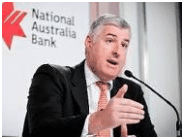
The Australian banks’ heavy reliance on offshore funding has received limited coverage in the press lately. On Thursday, the Australian Financial Review (AFR) ran a story entitled Clyne sounds funding alarm, where NAB’s CEO warned about funding challenges facing Australia’s banks and the risks inherent to the Australian economy. Surprisingly, however, Clyne’s comments were not picked up in the more widely read mainstream papers. Here’s an extract from the AFR article:
Australian banks’ annual funding task is set to double to $300 billion annually in the next decade, leaving the sector and broader economy vulnerable because of its dependence on offshore credit markets, National Australia Bank chief executive Cameron Clyne has warned…
“Australia’s banks are very, very reliant on offshore funding. The [big] four banks this year will probably source in order of $140 [billion] to $150 billion”, he said.
Mr Clyne estimated that figure could double to about $300 billion annually in 10 years. This presented the economy with “massive challenges” and left Australia exposed.
“You expose yourself to potential shocks [and] the shocks can come in many forms”, Mr Clyne said. “It’s one of those issues that we need to recognise, that it is a vulnerability and we don’t have to look back too far to see what a vulnerability looks like”.
As I have said on multiple occasions, Australia’s housing bubble has been fuelled by:
- an increased emphasis on mortgage lending relative to other forms of lending (e.g. lending to businesses); which has been funded through
- heavy offshore borrowing by Australia’s lenders, led by the big four banks.
The first point is illustrated brilliantly by the below chart from deflationite.com, showing how in 1990, Australia’s banks lent around two-thirds to businesses and one-thirds to households. However, over the past 20 years, the banks have increasingly focussed their lending on housing such that business loans now account for only around one-third of total bank lending.
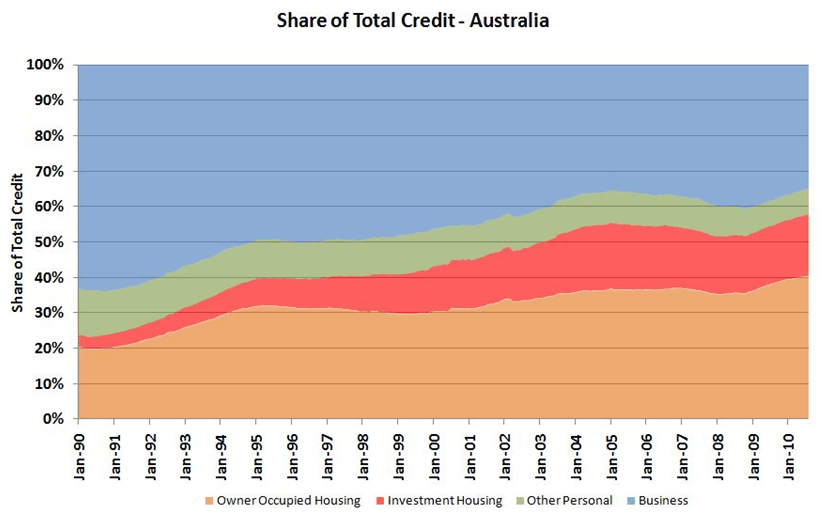
On the second point, the banks’ increasing reliance of offshore funding is shown clearly by the below chart, showing a sharp increase in external liabilities by Depository Corporations over the past 20 years [note: the below chart also includes offshore borrowings by building societies, credit unions and registered financial corporations, although the banks account for the lion’s share].
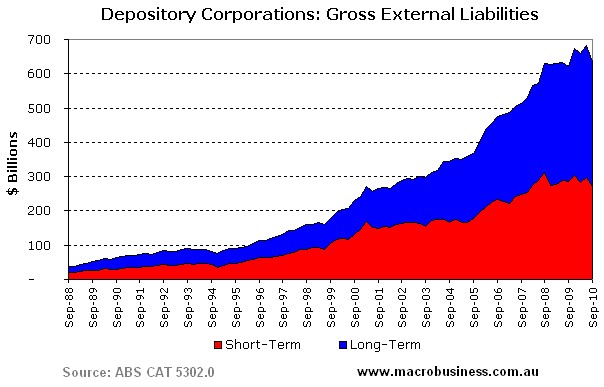
Now consider the below chart from fellow MacroBusiness blogger, Deep T., showing three indexes starting at January 2000 representing the growth in residential loan assets, bank deposits and offshore borrowings. It also includes a ratio to compare residential housing loans and deposits.
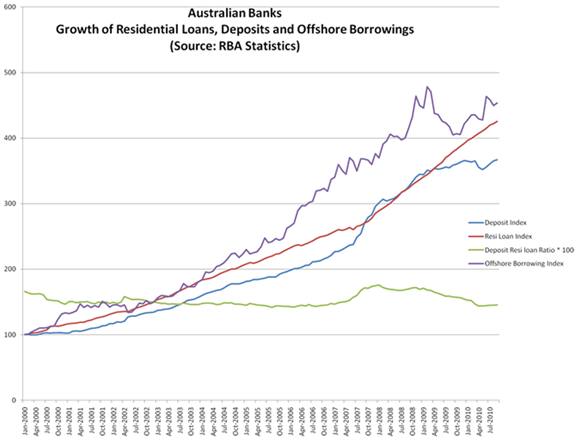
What should become increasingly clear is that the growth in Australian housing values has been funded, to a large extent, by foreign borrowings, much of it short-term.
Clearly, the vulnerability that Clyne was referring to in the AFR article is the roll-over risk relating to the banks’ heavy offshore funding, which came to the fore during the GFC when the banks were unable to refinance their maturing wholesale borrowings. This necessitated extensive Government (taxpayer) support in the form of: (1) the wholesale funding guarantee; and (2) unprecedented liquidity support from the RBA via the repo market, which ensured that the banks remained solvent and credit continued to flow into the Australian economy (mostly housing). Let’s also not forget that the Government provided support to the asset-side of the banks’ balance sheets – i.e. the home values providing collateral against mortgages – via the temporary increase to the first-home buyer’s grant and the temporary relaxation of the rules on foreign ownership of residential property.
The extend of taxpayer support provided to Australia’s banks is evident from the below IMF chart, showing that the Australian Government guaranteed the second highest level of debt in the developed world behind Ireland.
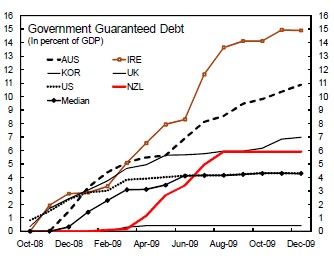
Whilst these Government interventions worked well to reflate the housing/credit bubble after the GFC, we now appear to have reached a situation where the banks are facing difficulty growing their offshore borrowings. In spite of Clyne’s prediction that Australia’s banks would increase their foreign borrowings to $300 billion annually over the next decade, earlier reports suggest that the banks will be loath to raise additional offshore funds as this could put their prized AA credit ratings at risk. Each of the big four banks are amongst the world’s heaviest issuers of wholesale debt and they are already in the sights of regulators, ratings agencies and investors for their heavy reliance on wholesale money markets.
So unless the banks can replace this funding with another source, their ability to support further house price growth appears to be limited. And without continued increases in debt issuance, there is little prospect of continued growth of housing values. A prolonged period of price stagnation, therefore, appears to be the best case outcome for the Australian housing market.
Cheers Leith

